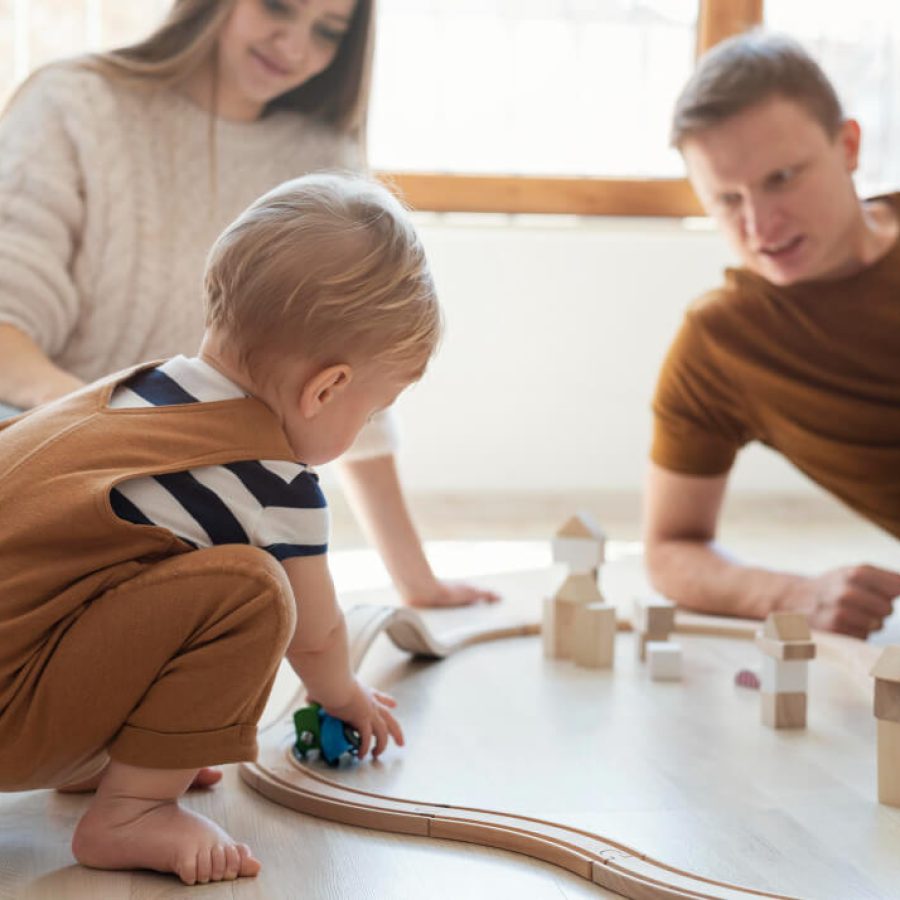Knowing what proprioception is can help you better understand how your child moves and explores the world, since it is the body’s ability to sense its position, movement, and the force of each action. Often called the “sixth sense,” it works to support everyday activities.
Proprioception enables your Little One to know where their arms and legs are without needing to look. This helps them with balance, coordination, and feeling secure in their movements. It plays a key role in how children run, play, and even stay calm.
Keep reading to fully understand its importance as children develop!
How Does Proprioception Work in Babies?
This important sense begins to develop even before birth, as babies move and stretch inside the womb.
After they’re born, every little wiggle continues to shape their proprioceptive abilities. It’s a natural process that grows with each new experience.
Simple activities like tummy time, crawling, and reaching for toys help strengthen this sense. Letting your Little One explore different textures and movements supports their body awareness.
These early experiences lay the foundation for conscious and unconscious body movement, which then results in an accurate sense of their different body parts.
Why is Proprioception Important for Your Baby?
As a baby grows, proprioception plays an important role in building strong motor skills and coordination. It helps them feel where their body is in space, which supports safe and confident movement.
This sense also encourages better posture and smoother transitions between actions.
It teaches a child how much force to use when performing common actions such as holding a toy, giving a hug, or taking a step.
With time, this sharpened sense of space teaches them to interact more gently and effectively with the world around them.
In short, supporting proprioceptive development can make daily activities feel easier and more enjoyable.
Signs of Proprioception Challenges
Some children may show signs that their proprioceptive system needs extra support.
They might appear clumsy, bump into things often, or have trouble with tasks that require coordination, such as arts and crafts.
Others may constantly seek movement, like jumping or crashing into furniture.
If you notice these behaviors and feel concerned, you are not alone. You might want to talk with your pediatrician or an occupational therapist for guidance.
Early support can make a meaningful difference in helping your child move with comfort and confidence — as well as buy you time should you need any type of intervention to support your child’s physical development.
Activities to Support Proprioception Development
There are simple and loving ways you can support your baby’s proprioceptive development and incorporate it to your daily routine at home.
Gentle massages, playful stretches, and soft toys can offer input to their growing bodies. Supervised climbing over cushions or crawling through tunnels can help build awareness.
These activities don’t need to be complicated or time-consuming. You can weave them naturally into your normal schedule, like after bath time or during play. Little moments of connection like these can go a long way in supporting your child’s sensory growth.
Supporting Growth Every Step of the Way
Watching your Little One’s development closely helps you support them in the best way possible. Understanding what is proprioception and paying attention to their progress makes it easier to celebrate each new milestone!
For more tips on what to expect as your child grows, check out our article on Development Stages: you’ll find a friendly guide to help you understand and enjoy every step of their journey.


